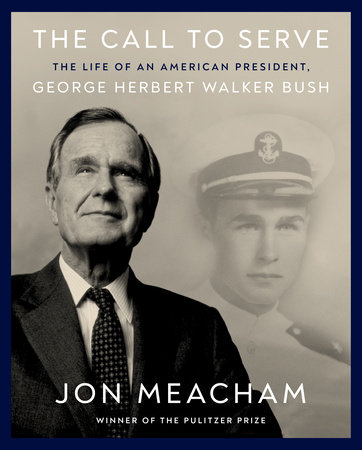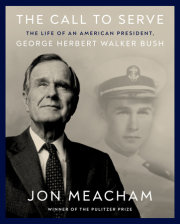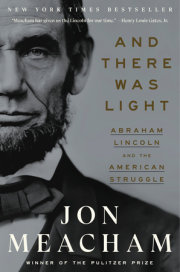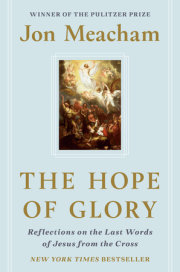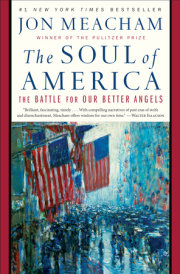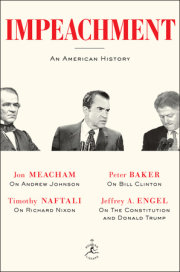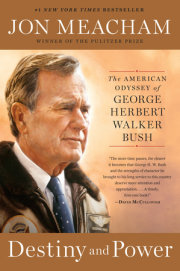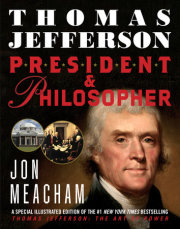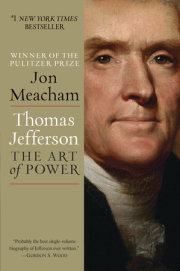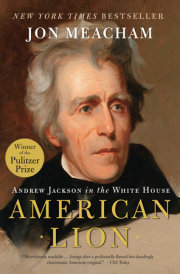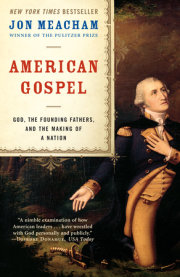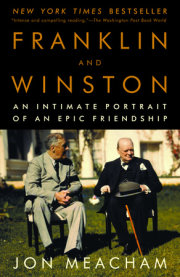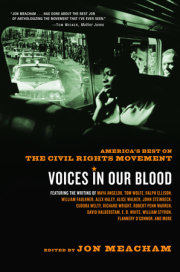Chapter One
A Beautiful World to Grow Up InBeginnings to 1942
Markedly a gentleman. Markedly reliable. Not easily led. —A teacher’s evaluation of a young George H. W. Bush
His first memory was of the sea, and of his father—the tall, commanding figure of Prescott Bush. As best George H. W. Bush could recall, his consciousness began at Walker’s Point, in Kennebunkport, Maine, where he remembered standing next to his father in the small entry hall near the front door of the oceanfront house on the peninsular estate his grandfather, George Herbert Walker, had bought in 1900 with his own father, David Davis Walker. Bush’s childhood world was one of relentless competition, of opaque codes, and of an ambient sense that life was meant to be lived fully and graciously—but also fully and ferociously. You were gracious, but you were also expected to prevail. “It was a beautiful world to grow up in,” recalled Bush’s sister, Nancy Bush Ellis. “A grand, funny world, really. Unimaginable now.”
That world was in fact not all that imaginable for most people even then. The Bushes were old Yankees with antecedents on the Mayflower and distinguished service during the American Revolution. (One Bush forebear, Dr. Samuel Prescott, was a Massachusetts patriot who rode with Paul Revere.) The forty-first president’s great-great-grandfather, Obadiah Bush, served in the War of 1812 at the young age of fifteen, married a woman recalled as the “comely” Harriet Smith, and caught gold fever in the middle of the nineteenth century but died before he could move his family out to the promised land of San Francisco. Obadiah’s eldest son, James Smith Bush, was an Episcopal clergyman who lost his traditionalist faith and became a Unitarian. And his son, Samuel Prescott Bush, known as “S.P.,” born in 1863, became a successful industrialist in Columbus, Ohio. “Grandfather Bush was quite severe,” recalled Nancy Bush Ellis. “He wasn’t mean, but so correct.” S.P. was, George H. W. Bush remembered, “respected”—a key attribute in the Bush ethos.
S.P. and Flora Sheldon Bush had a son, Prescott Sheldon Bush, in 1895. A skilled golfer, Prescott attended St. George’s School and was a successful Yale man, graduating in 1917. In 1918 he served in France as an army artillery captain before returning to go into business, first with Simmons Hardware Company in St. Louis. The move back to the Midwest after a childhood in Columbus was fortuitous, if not for his long-term professional prospects—Prescott would eventually make his mark in the East, in investment banking—then for his personal ones.
For it was in St. Louis that he met Dorothy Wear Walker—“Dotty” to her intimates—the daughter of a big, blustery investment banker named George Herbert Walker. “He was a flamboyant fellow, a boxer,” George H. W. Bush recalled of his maternal grandfather. “A lot of people were scared of him, as we were.” Elsie Walker, a granddaughter, once asked her father, John Walker, what kind of man old G. H. Walker had been. “He was a real son of a bitch,” Walker replied. “He would take his four sons down to the basement and box with them,” recalled a grandson. “And he pulled no punches.” Dotty, a skilled sportswoman, escaped the harsh treatment the old man meted out to his sons. But competition was a constant, and Dorothy inherited her father’s toughness while eschewing his buccaneer style.
Known as “Bert,” “Pop,” and sometimes as “G.H.,” Walker made and lost fortunes over the course of a tumultuous life that stretched from Hortense Place in St. Louis to Walker’s Point in Kennebunkport to a quail-hunting plantation in South Carolina to a western estate in Santa Barbara. He came from a family as old as the Bushes. The Walkers had arrived in America in the seventeenth century and made their way to Maryland, where they settled along the Chesapeake on a river known as the Sassafras. There, in Cecil County, Maryland, Walker ancestors owned enslaved people and raised cotton.
His grandparents, George and Harriet Walker, lost the land in Maryland in the 1830s and went west, to Illinois, where their son David Davis Walker was born in 1840. The child was named for a kinsman, the future United States Supreme Court justice David Davis, a political ally of Abraham Lincoln’s. By 1857, “D.D.” was in the dry-goods business in St. Louis, where he married a Roman Catholic, Martha Beaky. George Herbert Walker was one of their six children.
Born in 1875, “Bert” was sent to a Jesuit boarding school in England but abandoned Catholicism in order to marry Loulie Wear, a Presbyterian. After founding G. H. Walker & Company, an early investment banking business, in 1900, Walker came east to run the Harriman family of New York’s investment arm in 1920. The next year, Dorothy married Prescott Bush at St. Ann’s Church in Kennebunkport.
Prescott’s business connections took them to Kingsport, Tennessee; St. Louis, Missouri; Columbus, Ohio; and then Milton, Massachusetts, where they moved into a Victorian house at 173 Adams Street. It was here that their second child was born on Thursday, June 12, 1924. Their first, born in 1922, had been named Prescott Jr.; this son would be named for Dorothy’s father: George Herbert Walker Bush, called “Poppy,” or “Little Pop,” since his grandfather G.H. was “Pop.”
The stay in Milton was brief; Prescott soon moved the family to Greenwich, Connecticut. From there he would commute to his offices at the investment firm of Brown Brothers Harriman. A director of the CBS television network and the insurance giant Prudential, Prescott Bush also served as moderator of the Greenwich town meeting. “Others would climb off the club car coming out from New York whining about how they wanted to get home for a drink and he’d go off to the town meeting and preside,” recalled George H. W. Bush.
After Prescott Jr. and George, Dorothy and Prescott Bush had three other children: Nancy (born 1926), Jonathan (born 1931), and William “Bucky” (born 1938). “Every mother has her own style,” George H. W. Bush recalled. “My Mother’s was a little like an Army drill sergeant’s. Dad was the Commanding General, make no mistake about that, but Mother was the guy out there day in and day out shaping up the troops.” She would play tennis until her blistered feet bled; a family story had a heavily pregnant Dorothy once hitting a home run in a softball game, rounding the bases, and leaving the field to deliver the baby.
Dorothy’s orders often came in sporting terms. “She loved games and thought that competition taught courage, fair play, and—I think most importantly—teamwork,” George H. W. Bush recalled. “She taught games to us endlessly. We learned from her everything we knew—solitaire, bridge, anagrams, Scrabble, charades, golf, swimming, baseball, tennis—you name it. She is still family champ in tiddlywinks.” Moreover, Mrs. Bush “also tamed our arrogance,” Bush recalled. “I’ll never forget, years ago, saying rather innocently [that] I thought I was ‘off my game.’ Mother jumped all over me. ‘You are just learning! You don’t have a game!’ The result: arrogance factor—down; determination to get a ‘game’—up!”
Greenwich Country Day School was a new institution in the mid-1920s. “We are interested in the individual development of every member of the School,” the school’s first headmaster wrote, “and we cannot afford to develop in any boy a false sense of either superiority or inferiority.” Students were graded on an unusual standard: “Claims No More Than His Fair Share of Attention.”
As their son prepared to graduate from GCDS in 1937, Bush’s parents filled out a questionnaire from his next school, Phillips Academy in Andover, Massachusetts. Dorothy and Prescott referred to their second son not as “Poppy” or “George” but as “Walker” on the form—a detail that surprised the forty-first president when he was shown the document late in life. “Walker has always been a good healthy boy,” the Bushes wrote. “At present he is having his teeth straightened. He has no other present physical weaknesses or disabilities although he is apparently growing rapidly and hasn’t gotten quite the strength he should have for his size. . . . [He also has] a tendency to overdo and get tired, at times beyond a reasonable point.”
Copyright © 2024 by Jon Meacham. All rights reserved. No part of this excerpt may be reproduced or reprinted without permission in writing from the publisher.

